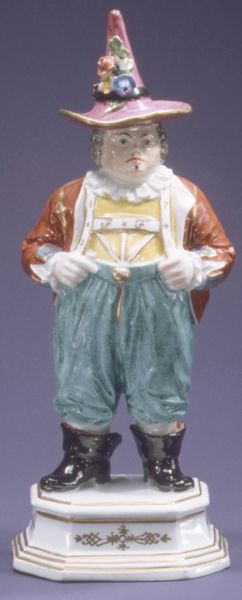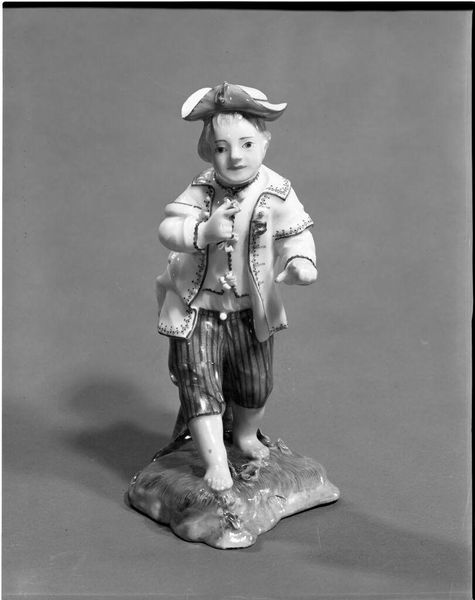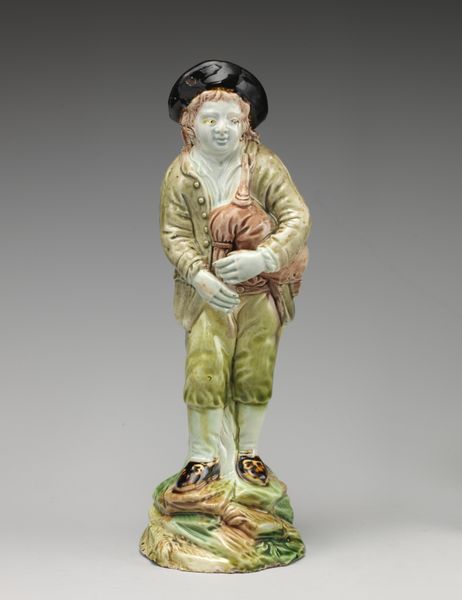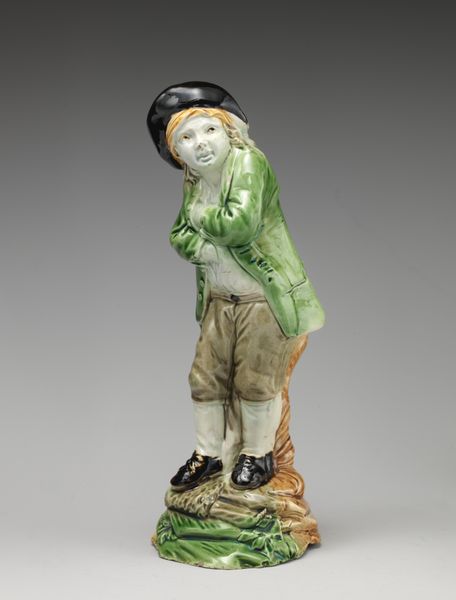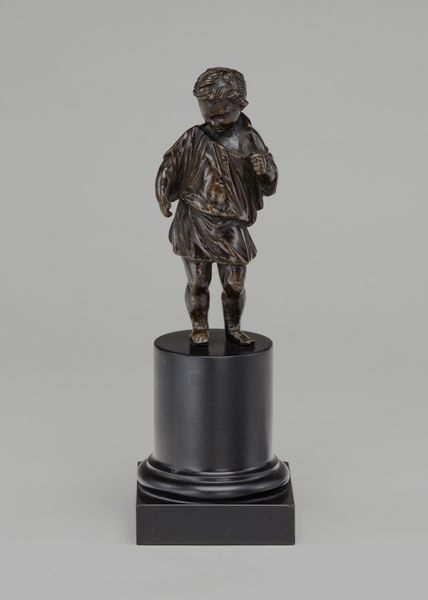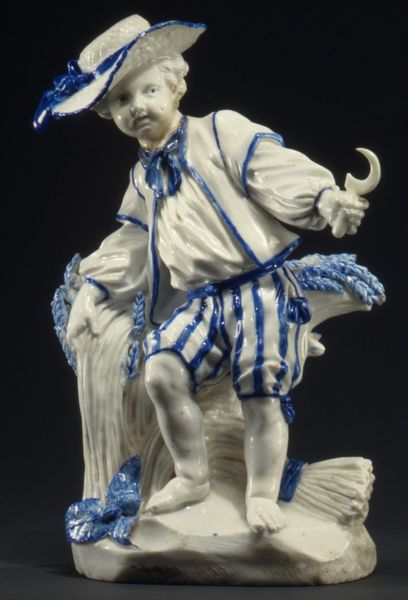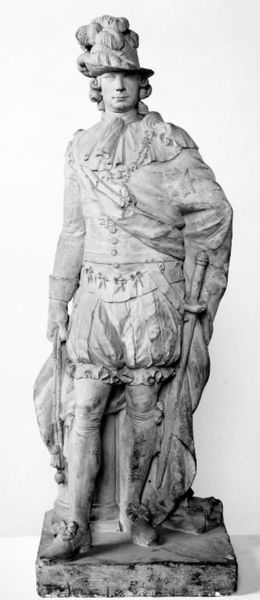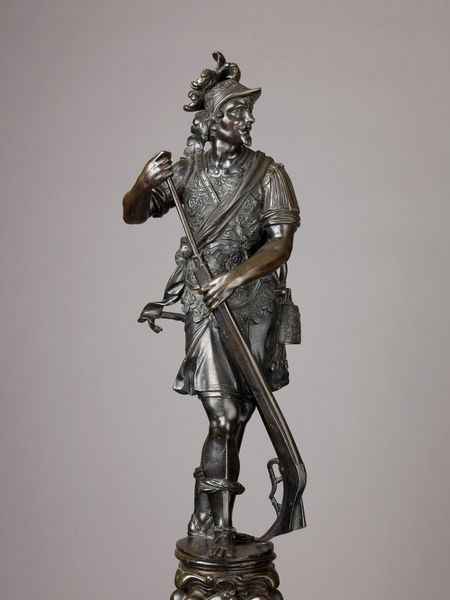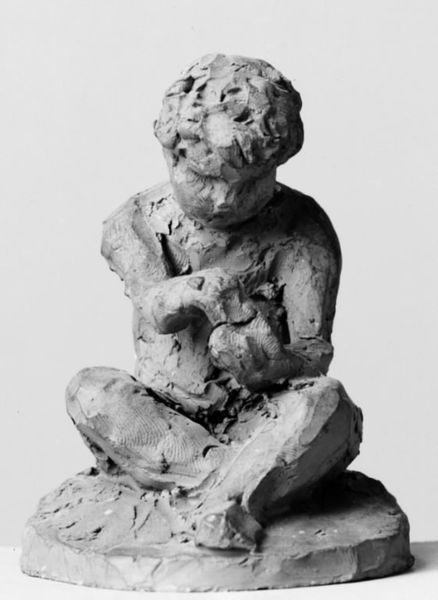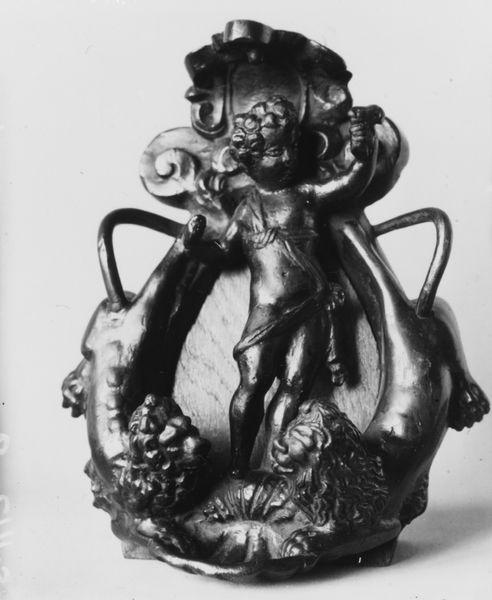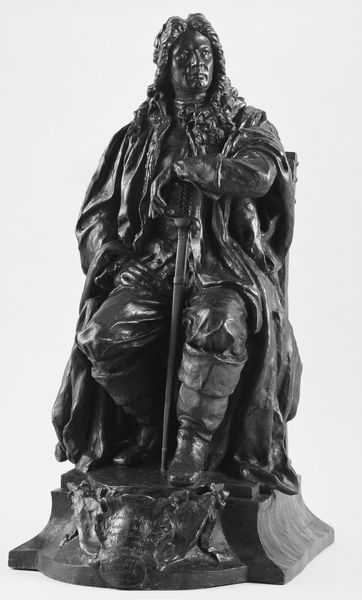
Dimensions: Height: 14 in. (35.6 cm)
Copyright: Public Domain
Curator: Well, hello there! I'm struck immediately by this little fellow's bravado. There's such playful arrogance packed into such a compact form. What do you make of this Baroque sculpture? Editor: It’s a rather intriguing object; this is Walter Pompe’s "Dwarf as Mars," created around 1770. It’s one of a pair actually, and it resides here in the Met's collection. I think it pushes some rather important boundaries, visually and conceptually. Curator: Boundaries, eh? Visually, the Baroque excess is obvious – the flamboyant hat, the intricate details of his coat, those wonderful swirling mustaches...but there's an undeniable subversion at play here too, right? Is it making fun of military authority, in its presentation? Editor: Exactly! We’re confronted with the artistic interpretation of an individual with dwarfism cast in the role of Mars, the Roman god of war. It's a rather uncomfortable tension, this deliberate contrast. How does this representation perpetuate stereotypes about the "grotesque" body, as opposed to interrogating the very concept of “heroism” as defined by able-bodied masculine norms? Curator: Ah, “grotesque”, but consider the historical context of dwarfs, their strange social positions. Court dwarfs sometimes wielded considerable power, acting as advisors, even jesters holding a mirror to the king! Isn’t there a possibility for agency and a celebration of individuality here, in portraying this particular individual in the guise of a powerful mythological figure? Editor: Perhaps, and it’s an interesting line of inquiry to pursue. Yet, even in portraying him as a powerful god, there remains the possibility of simultaneously reinforcing his "otherness" by casting his form as something humorous or mocking. This statue forces us to address not only artistic intention but also the potential harm inherent in certain representations of disability. It compels a confrontation with the complicated history of how art has contributed to social exclusion and discrimination. Curator: True, true. Representation is tricky territory. For me, looking at him, I am touched by his palpable self-possession; like a flower forcing its way through concrete. But you are right: there are some painful associations we cannot deny and should never dismiss, the more the conversation circles around him. Editor: Precisely. And that's perhaps why this sculpture still feels so relevant, all these years later. It isn't just a historical object, it's a catalyst. Curator: I’m still grinning, mind. He’s got such great swagger! Editor: Well, then perhaps our task is to invite further dialogues. After all, this piece is bound to spark diverse opinions.
Comments
No comments
Be the first to comment and join the conversation on the ultimate creative platform.

